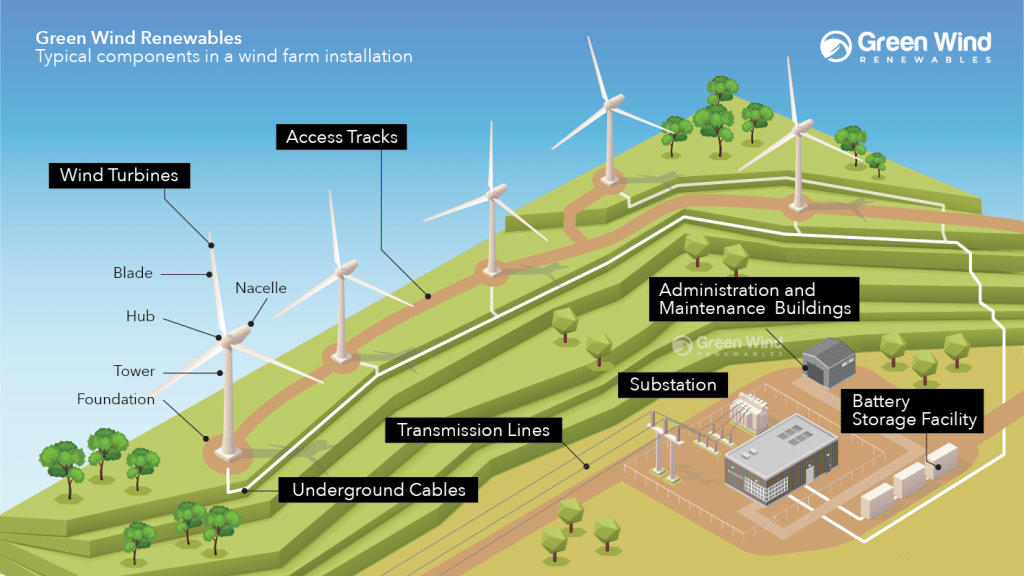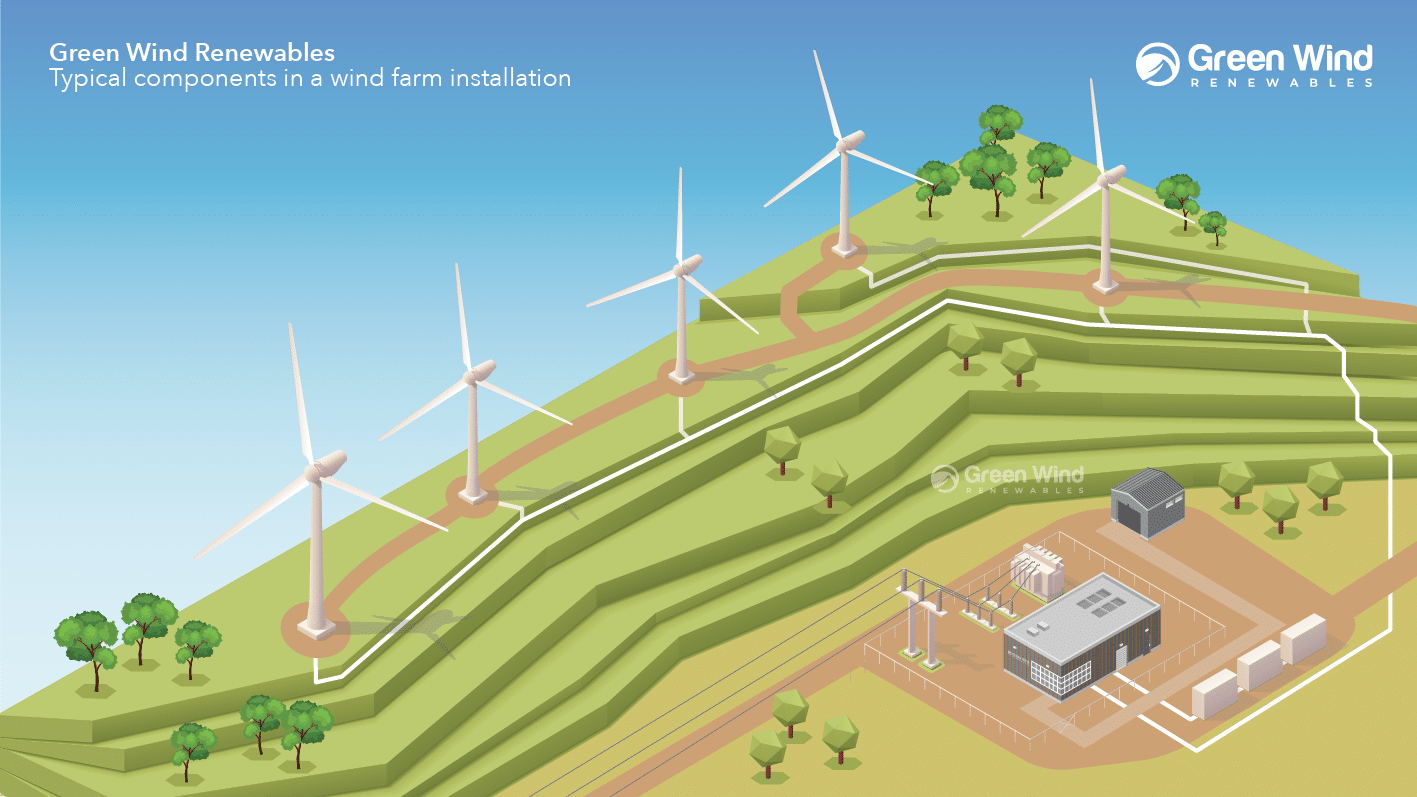Wandoo Wind Farm is located near Wannamal, approximately 30kms North of Bindoon and 50kms South of Moora. The 450+MW wind farm will be one of the largest wind farms in Western Australia once constructed. The wind farm is expected to produce enough electricity to power ~250,000 Western Australian homes, offsetting ~0.8 million tonnes of CO2 being released into the atmosphere annually.
1 – Based on mean average household electricity usage (couples with children) of 17kWh/day sourced from CSIRO Energise Insight released December 2018
2 – Based on average 2023 emissions intensity of SWIS of 0.53kg CO2-e/kWh sourced from Department of Climate Change, Energy, the Environment and Water: Australian National Greenhouse Accounts Factors, August 2023
** Preliminary metrics, subject to refinement and change.
Completed
Completed
1-2 Years
2-5 Years
2 Years
30+ Years
~1 Year
1-2 Years
2-7 Years
2 Years
30+ Years
~1 Year


up to 75
up to 8MW
450+MW
up to 90m
up to 170m
buried 1m underground
up to 0.8 million tonnes
330kV or 500kV
33kV
up to 1.5TWh
© Copyright 2024 Green Wind Renewables
Green Wind Renewables is always keen to hear from landowners, the community and interested stakeholders about our projects.
Green Wind Renewables acknowledges the traditional custodians throughout Western Australia and their continuing connection to the land, waters and community. We pay our respects to all members of the Aboriginal communities and their cultures; and to Elders both past and present.
Prospective wind farm sites are selected based on analysis of available wind resource information, proximity to the existing high voltage electricity grid, population density in the area, existing land use, and an assessment of likely site constraints and opportunities.
Discussions with potential host landowners begin, along with on site wind monitoring. Grid connection enquiries are lodged with Western Power, and further desktop studies are completed to better understand the suitability of the site.
Land agreements are secured with host landowners, and community consultation begins with neighbour properties. Wind monitoring masts are erected, and environmental surveys commence to support the approval process.
Development and environmental approval referrals are now submitted. Community consultation and engagement activities continue, while grid connection studies are undertaken, and contracts are negotiated for a lead contractor to build the wind farm.
Contracts are negotiated for customers to purchase the electricity from the facility and, where necessary, third-party financiers are brought into the project.
Early works begin with access roads and site construction compounds. This is followed by turbine foundation excavation and construction, cable laying, substation and transmission line construction. Finally, the wind turbines are assembled and commissioned. Community engagement activities continue.
The wind farm is now in operation for the next 30 years in accordance with approval conditions. Compliance with approvals and management plans are monitored and reported throughout the wind farms life.
At the end of the wind farm life, the wind farm is decommissioned and all above ground infrastructure is removed. Opportunities to repower the site with a new wind farm are explored at this stage. If no further wind farm is developed and built, the land is returned to its original use.